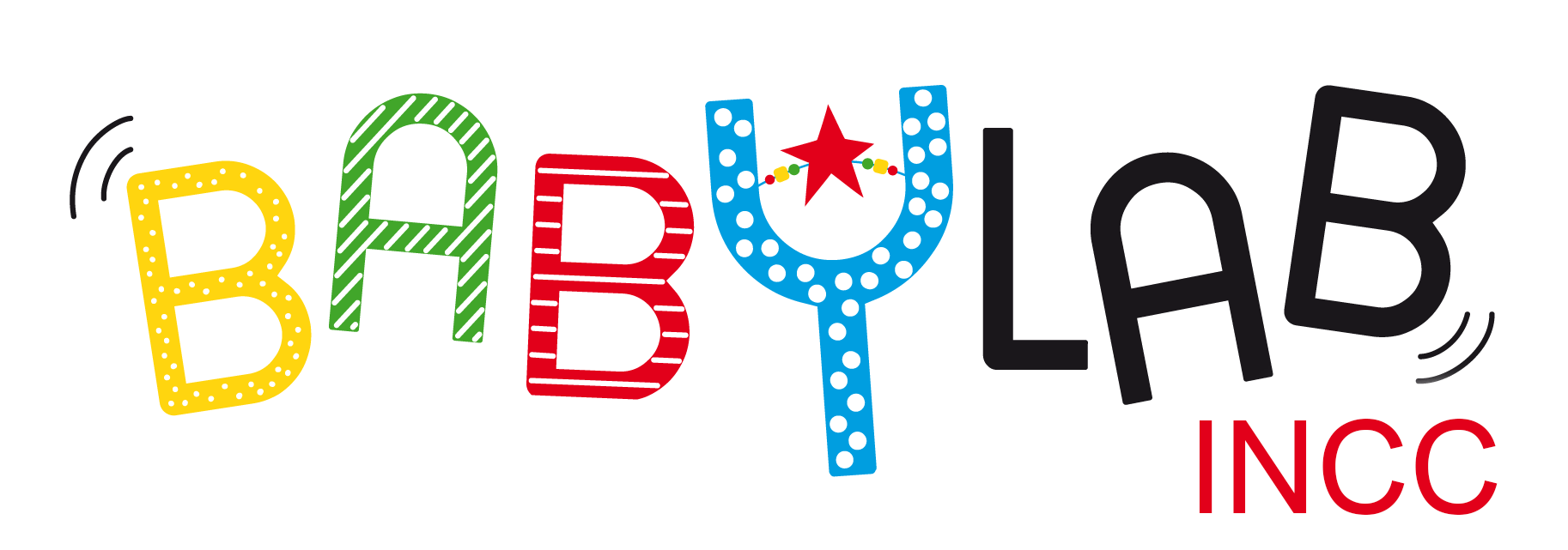Maxine Dos Santos
Labmanager and research assistant

Ongoing projects
ManyNumbers – an international project on learning to count and numbers
How do children eventually manage to confer numerical meaning to number words and to counting? In particular, does understanding number words build on the type of early numerical skills observed in infants? These are the questions that this international project seeks to answer.

Project team lead
Véronique Izard
Neural study of bilingual lexicon structure: impact of language distance, word type, and relatedness in the developing brain
Our aim is to investigate lexical-semantic organisation in bilingual infants, as a lens into the internal structure of bilingual lexicon. More specifically, we aim to investigate how lexical-semantic organisation – both thematic and taxonomic – in the bilingual brain is shaped by language distance and cognate status of words.

Project team lead
Pia Rämä
Early speech perception and processing of phonological information in lexical acquisition in French- and Akan-learning infants and toddlers
This cross-linguistic project explores how French and Akan-learning toddlers process phonological information (consonants, vowels, tones) when learning words in their native and non-native languages.

Project team lead
Paul Okyere Omane
Mental Space in Memory through Adversarial Collaboration: Exploring the Origins and the Developmental Course – SPACEODC
Human beings tend to spontaneously use space to think, represent externally (e.g. calendars) and even talk about a variety of non-spatial domains (e.g. time). This ability is functional from birth, how it is modulated throughout the first years of life, what are its behavioral signatures and underlying biases. Finally, we will examine whether, and how, this capacity has an impact on learning in different information domains, from birth to adulthood.

Project team lead
Maria Dolores (Lola) de Hevia
The origins and development of the mental timeline
The ability to represent abstract concepts sets humans apart from all other animals. For example, although we cannot see or touch time, we possess rich temporal representations. What enables this cognitive feat?

Project collaborator
Maria Dolores (Lola) de Hevia
Geometries Return
Building on a previous ANR project (“Geometries”), this new project aims at characterizing the geometric content of form representations across a variety of formats (2D, 3D), presentation modalities (vision, touch), ages (infants, children, adults), and visual experience (sighted and blind participants).

Project team lead
Véronique Izard
Linking early phonolexical acquisition and later vocabulary development
In this project, we test the proposal that a crucial milestone in language acquisition is reached when infants discover which sounds (consonants versus vowels) are more important at the lexical level in their native language, leading to an acceleration of subsequent vocabulary development.

Project team lead
Thierry Nazzi
Study of Visual Fixation in Neurodevelopmental Disorders
This project will measure visual fixation capabilities in 3 participant populations (Typical Development, Autism Spectrum Disorders, and Cerebral Visual Impairment) to evaluate the prevalence of CVI in the ASD population.

Projet team lead
Sylvie Chokron

Projet team lead
Marie PIeron
Early development of cerebral representations of the body in infants: explorations in neuroimaging and behaviour
The aim of this study is to gain a better understanding of how a baby’s brain perceives and represents different parts of its body in the first few months after birth, using functional magnetic resonance imaging and behavioural assessments.

Project collaborator
Marianne Barbu-Roth
Effect of early training in crawling using a mini skateboard on the locomotor and motor development of very premature cerebral palsy patients
The project consists of evaluating the feasibility and effectiveness of 8 weeks of early stimulation training in quadruped walking on a mini skateboard, the Crawli skate, in 50 very premature babies at high risk of neurodevelopmental disorders and followed longitudinally.

Project collaborator
Marianne Barbu-Roth
Ticoala
Adaptation of a digital tool for assessing children’s language skills in nursery school.

Project team lead
Thierry Nazzi

Project team lead
Ranka Bijeljac-Babić
Prosodic grouping biases from birth to adulthood in monolingual speakers
This project studies how adults and young children use variations in intensity, duration and intonation to group syllables into word units.

Project team lead
Thierry Nazzi
Characterisation of the processing of acoustic cues and speech processing in noise in normal-hearing and hearing-impaired children with mild to moderate sensorineural hearing loss – SPINTAE
In this large-scale study, we aim to evaluate the processing abilities of different acoustic indices between 5 and 10 years of age in children without hearing problems and those with sensorineural hearing loss.

Project team lead
Laurianne Cabrera
Perception of sibilant consonants and understanding of plurals in hearing-impaired children – LaulauH
The objective is to understand to what extent a deficit in perception of certain sounds, such as “s” and “z”, when they are heard in background noise, can have an impact on oral comprehension of the plural in subject-verb agreement.

Project team lead
Laurianne Cabrera
Development of the auditory system and speech perception in infants- BabySIN
On the one hand, the cerebral processing of different acoustic variations of sounds is studied in 3-month-old infants using the electroencephalography technique. On the other hand, the ability to perceive speech in noise in these infants is measured using an observation technique.

Project team lead
Laurianne Cabrera
Proccesing phonological information while learning and recognizing words
It has been proposed that consonants carry more weight than vowels in lexical processing. Given the timing of acquisition observed in French, we have proposed that this consonant bias emerges in connection with phonological and (proto)lexical acquisition, a hypothesis we are currently testing.

Project team lead
Thierry Nazzi
Predicting language outcomes in typical development
We explore how elementary perception and learning mechanisms are linked to language acquisition. To this end, we test infants on different perception and learning mechanisms, at different stages of their development and up to 2-3 years of age.

Project team lead
Thierry Nazzi
Vicarious Social Touch perception in infants
The aim of this project is to investigate the physiological, behavioural and neural responses of infants to social-tactile interactions.

Project team lead
Olivier Mascaro

Project team lead
Louise Krisch
FoundTrust: The neurocognitive bases of epistemic trust
The willingness to believe communicated information (or epistemic trust) plays a central role in human cognitive development. The aim of this project is to characterize its development in the first years of life.

Project team lead
Olivier Mascaro
Language acquisition in atypical development
Knowing the mechanisms underlying typical language acquisition also makes it possible to explore whether or not these mechanisms are present in populations with atypical language acquisition and could be involved in their learning difficulties.

Project team lead
Thierry Nazzi
Origin of a numerical mental line
In adults, the existence of a mental number line (the representation of smaller quantities on the left and larger quantities on the right) has been demonstrated. But what about newborns?

Project team lead
Maria Dolores (Lola) de Hevia
Lexical-semantic development
Our studies aim to understand the neural mechanisms underlying this development in monolingual and bilingual children.

Project team lead
Pia Rämä
Acquisition of phonological biases in lexical processing
We aim to understand how different types of sounds, as well as their arrangements within the words of a language, influence the acquisition and lexical processing of French, German, and Franco-German bilingual speakers.

Project team lead
Thierry Nazzi
Vocabulary growth and sound symbolism
Our aim is to study whether the sensitivity to sound symbolism in infancy is linked to emerging vocabulary skills.

Project team lead
Pia Rämä
Voice familiarity in the processing of word meanings
This project aims to investigate whether familiarity with the speaker’s voice facilitates lexical-semantic processing in infants.

Project team lead
Pia Rämä
Selected Publications
– Piot, L., Chen, H., Picaud, A., Dos Santos, M., Granjon, L., Luo, Z., To, W.H.A., Lai, R.Y., Cheung, H. & Nazzi, T. (2024). Tonal interference in word learning? A comparison of Cantonese and French. Journal of Experimental Child Psychology.
